Wager App
How Improving Gamer Health Increases Retention in Gaming Industry
Role: UX/UI Designer (End to end)
Process: Design Thinking
Duration: 4 months
Research Tools: Affinity Map, Empathy Map
Design Tools: Figma, Miro, Invision, Photoshop,
The rise of eSports and mobile gaming turned video games into a $180 billion industry, surpassing the movie and sports industry combined. Sadly, this also increased sitting time especially for competitive players and aspiring professional gamers.

“Top competitors are playing 12 to 14 hours a day, at least six days a week.”
— CBS News

The problem is that …
Gamers tend to become sedentary when they prioritize video games over everything. Sedentary lifestyle has numerous health risks such as cardiovascular diseases, diabetes, obesity and depression.
So we recruited 5 competitive gamers between ages 13-34, and here’s what we found out.
“My back aches, I was fixated in ranking.”
— Manny
“I get aggressive, I was grounded.”
— Andy
All key insights were then combined to create Michael, a persona that checks all the boxes.
Let’s check his pain points.

No Healthy Routine
Michael spends the whole day playing with very little to no breaks.
Aggression
Frustrations from losing and toxic community made Michael aggressive.
Back Pain
He suffers from chronic back pain due to sitting for long hours.
Win or Lose, Still Plays
He got addicted. The urge for payback, rewards, records and prestige were the main hooks.
So the big question is …
How might we balance Michael’s lifestyle so that he feels healthy?
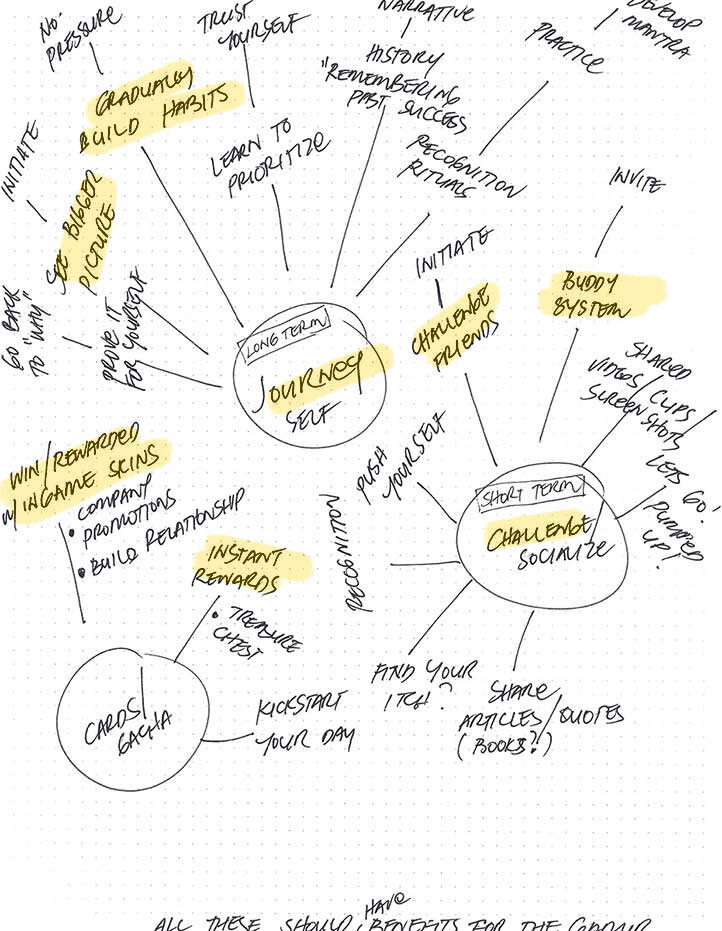
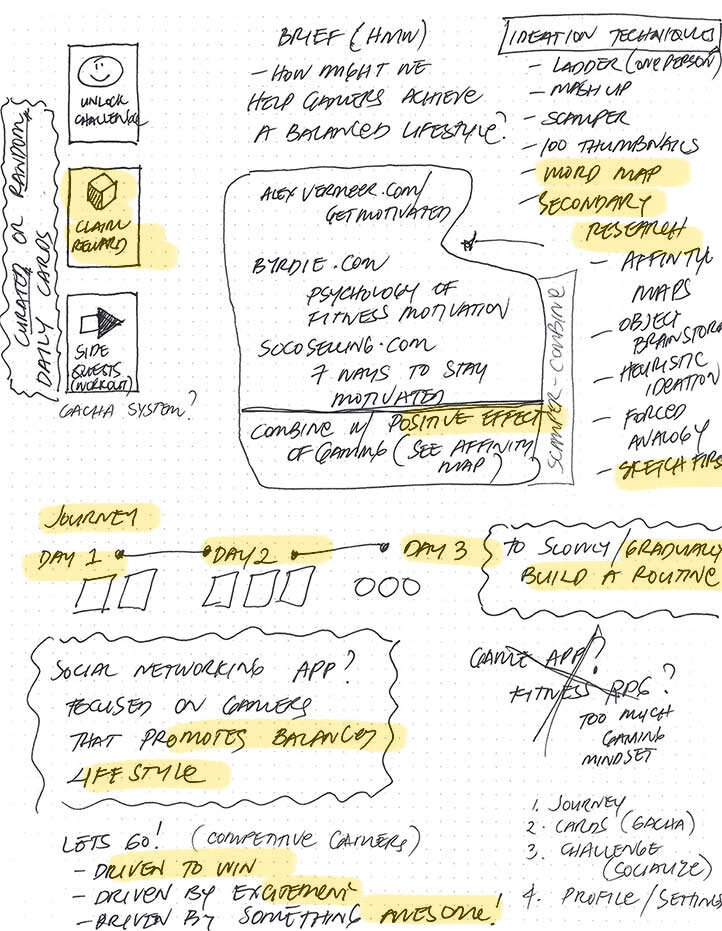
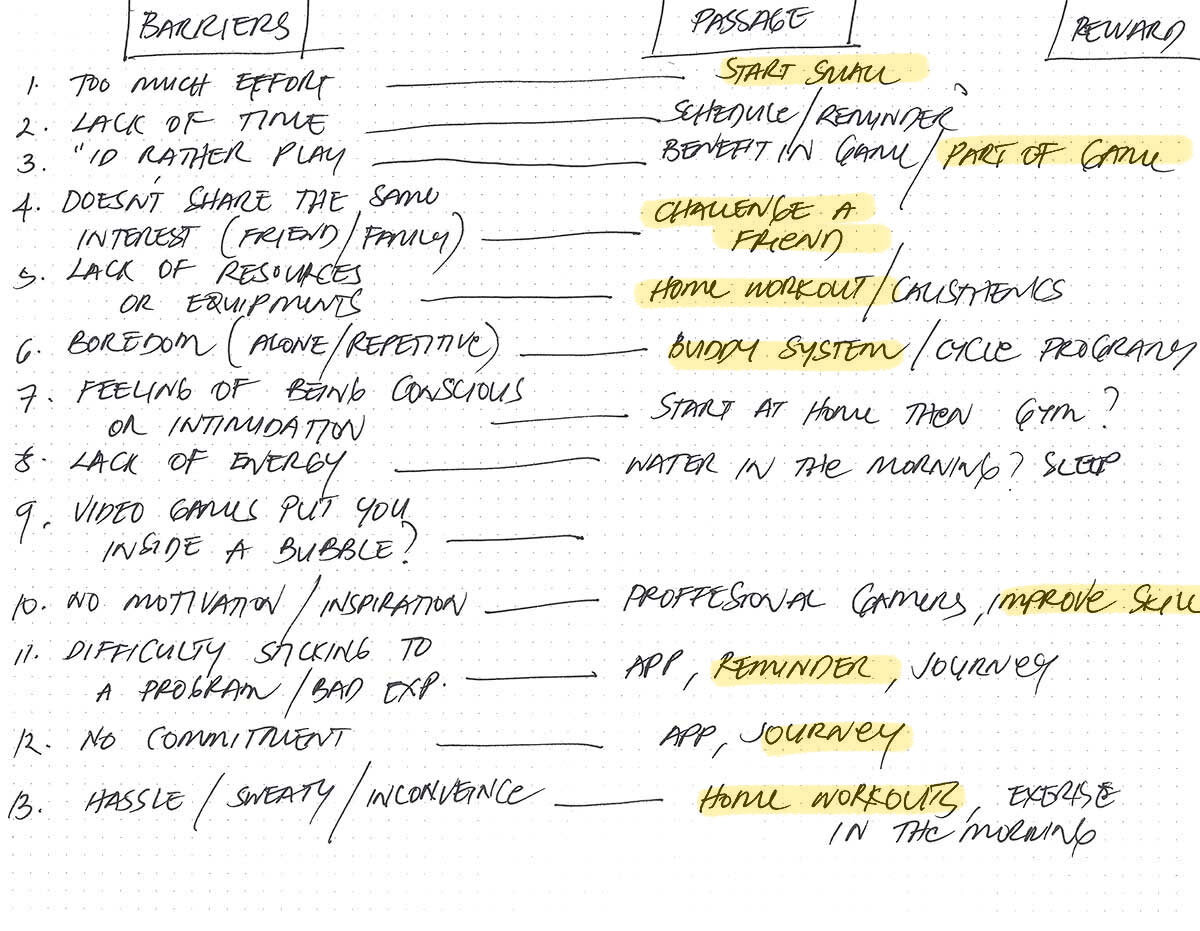
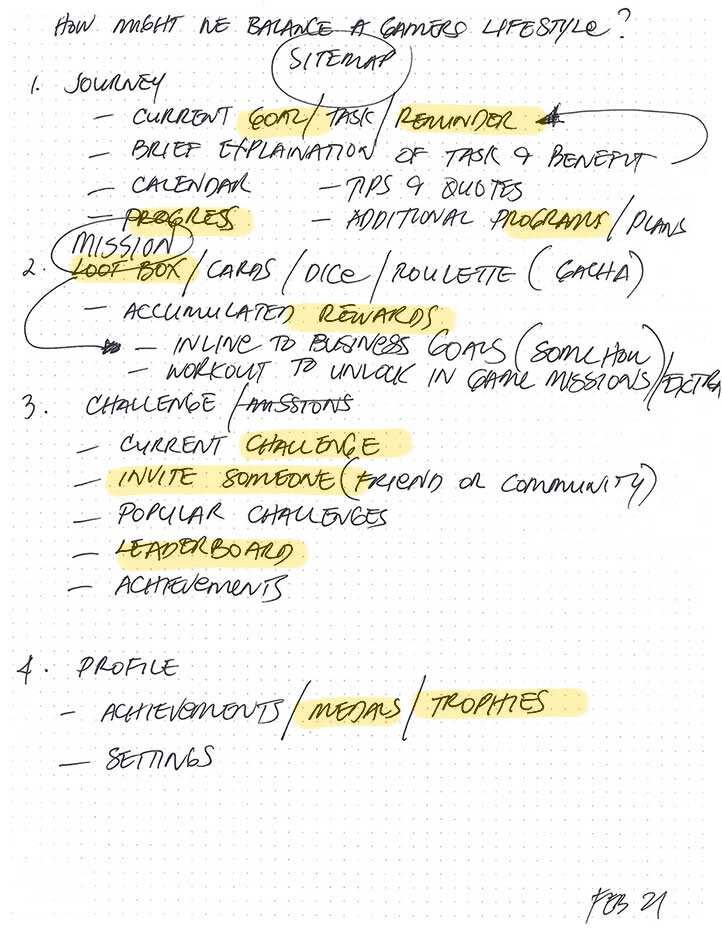
-
Long Term Journey
Start small and slowly build healthy habits for Michael.

-
Short Term Challenge
Create friendly challenges to boost his motivation.

-
Bonus Missions
Use loots and rewards to hook Michael in exercising.

Even though the above solutions were proven to be effective, they didn’t work on this application.
The prototype had so many features that confused the participants. It suffered from “feature fatigue”.
“Too many features ultimately make a product overwhelming and hard to use, which leads to dissatisfaction.”
So we toned down a bit and focused on this study instead.
“Competition. It was a far stronger motivation for exercise than friendly support..”
Challenges & Rewards
It was narrowed down to a simple solution.
Complete workout challenges to earn points. Use points to unlock in-game rewards.
“I Bet I Can”
Betting with friends was added to make the workout challenges more competitive and social.
This concept fits the Value Innovation framework.
“Value Innovation is the simultaneous pursuit of differentiation and low cost, creating a leap in value for both buyers and the company.”
— W. Chan Kim and Renée Mauborgne (Authors of Blue Ocean Strategy)
Introducing Wager …
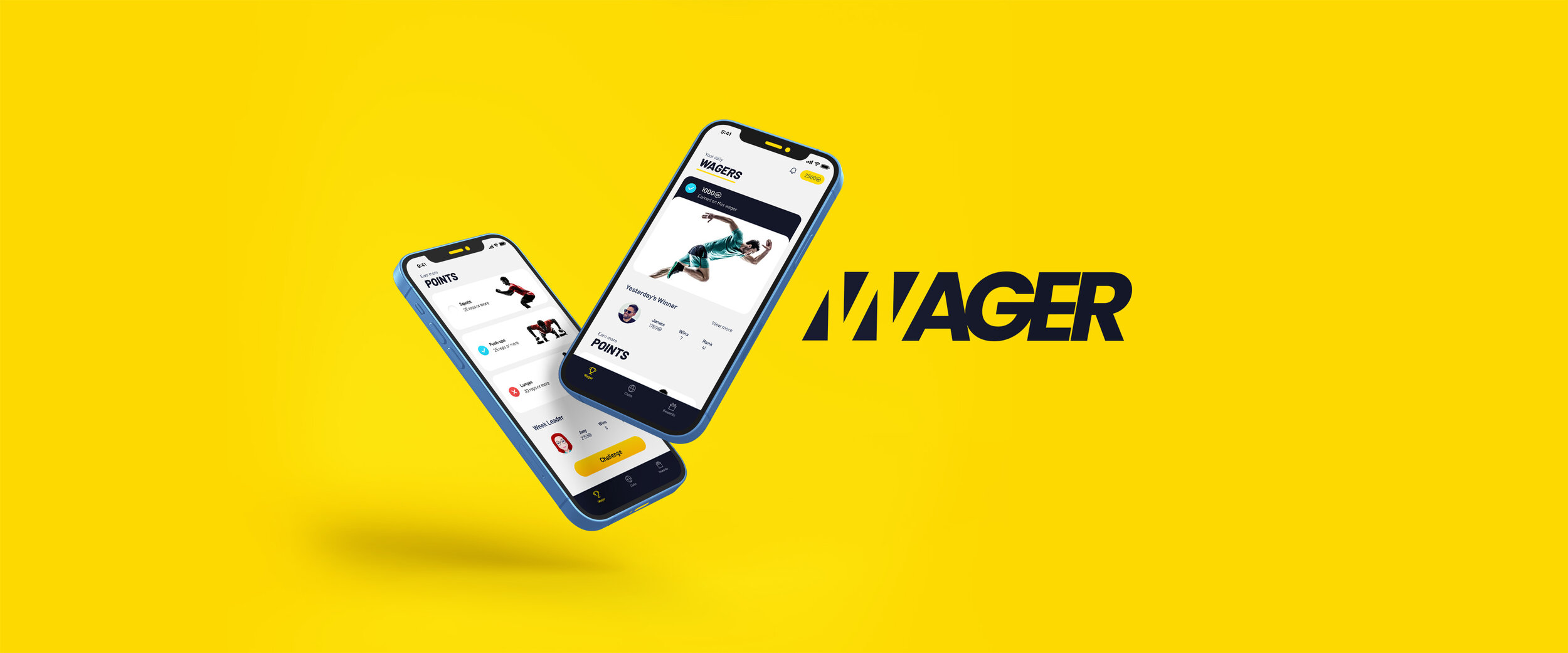
Social
Michael can connect with his friends or meet his next challenger in the Wager community.
Convenient
Michael will have a fun and challenging workout anywhere he wants, with the convenience of live video calls.
Motivating
The goal was not to take Michael away from his favorite video game, but to enhance his experience and motivation through in-game rewards.
Michael will also benefit from increased gaming performance.

“When players exercise before playing a game, they play better”
— CNBC
Balance is key for Michael. A healthy mind and body, not only benefit gamers, but also the industry.
Going beyond and caring for the well-being of gamers can increase loyalty.
“When a product harms people, they use it less or look for alternatives.”
— Nir Eyal (Author of Hooked: How to Build Habit-Forming Products)
Below are some minor changes after doing usability tests.
Less is More
According to Barry Schartz, having too many choices causes less happiness, less satisfaction and can even lead to paralysis.
The reduction of choices, made it easier for the participants to decide.

Try the prototype below.
Outcome
There’s still so much work but I’ve learned a lot on this project. I can’t stress this enough, a good product comes from a good user research, that brings out the root cause of a problem. Focus on the problem and always suppress personal biases.
Value Innovation
I’ve spent so much time iterating, but that’s the beauty of lo-fi prototypes and MVP’s. You’re guaranteed to save time and resources even if you feel like you didn’t. Paper prototypes played a big role in discovering the ideas that fits this framework.
Hook Model
The hook model is a powerful tool if used ethically. And if done right, it will bring high-frequency engagements that lasts.
Paradox of Choice
Less is more. Simple as that. Not only it provides convenience to users, but also lowers cost.
Building Healthy Products
Tech addiction is a rising concern. Healthy products and minding customer well-being will simply provide an edge over competition. Safety sells.
Edge Cases & Product Roadmap
Privacy
Live video calls for young gamers was a concern by one of the participants. This matter will be a top priority. Option for verification, to block and to not allow video calls are some ideas to be explored in the future.
P.E.T. Design
Below are some ideas that uses this design principle.
Persuasion - Workout routines & in game skins from eSports pros.
Emotion - Fulfilling goals and challenges.
Trust - Success stories and community building.
More Games
Partnership with other games and companies is another goal. This will help not only on the business side, but for gamers as well to be more motivated and enjoy more rewards.
Special thanks to Nate Chen, Chief Design Officer at Theory, for all the guidance and motivation. Looking forward to your upcoming book!










